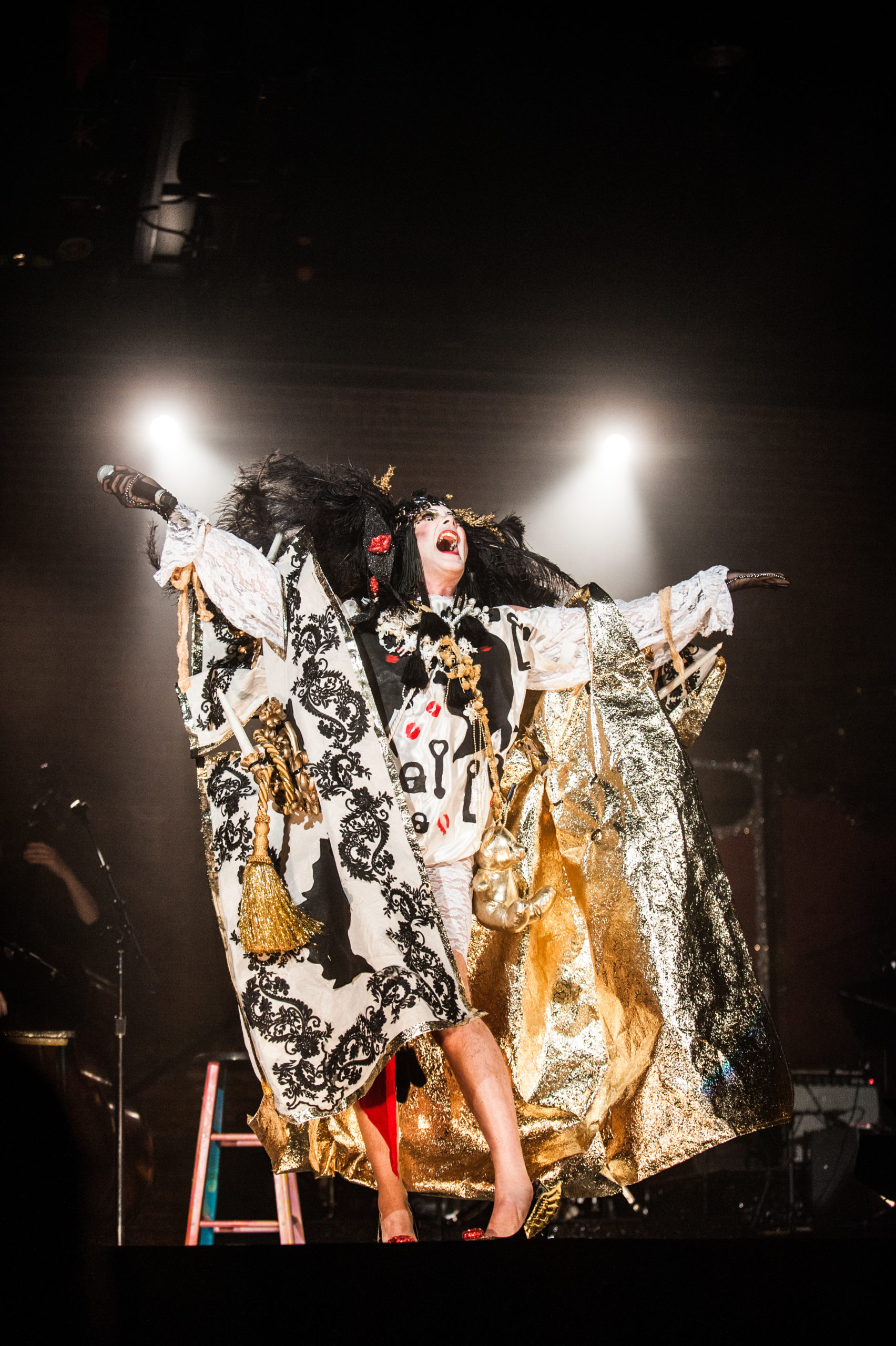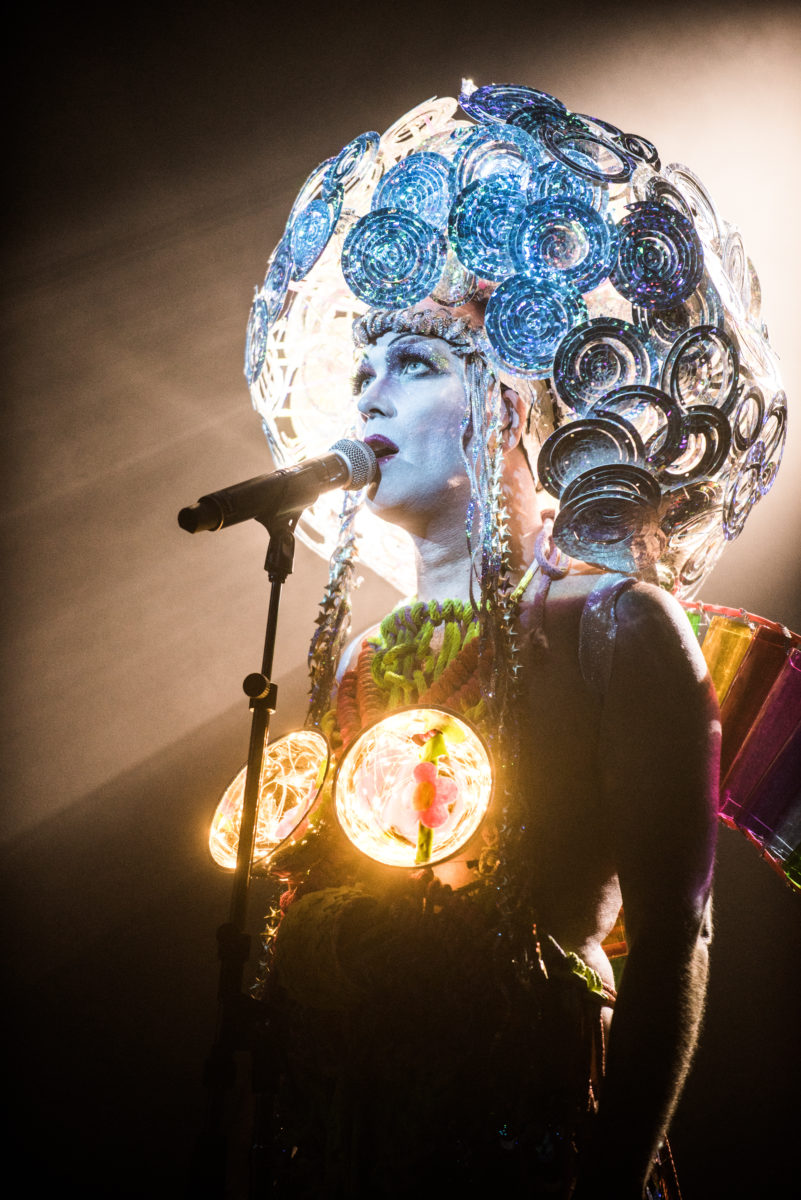
A TIME TO BE BORN—
TAYLOR MAC IN CONVERSATION WITH BARLO PERRY
On the night of the Los Angeles debut of performance artist-singer-songwriter-actor-playwright Taylor Mac, a catwalk was set up on the lounge terrace of UCLA’s Royce Hall for a pre-show reception. Under the gimlet-eyed purview and irrepressible judgment of a local MC—in drag, sipping vodka, and throwing shade—a number of girls, boys, queens, butches, and one Sister of Perpetual Indulgence picked up the gauntlet and displayed their fashion choices for the evening. The first walker, bespangled head to toe, drew a sidelong glance and the crack, “That’s what a glue gun can do, folks.” A duo in cardigans and pencil skirts were mildly praised: “Sensible realness! Sensible realness!” After one unsteady reveler in a safari hat attempted and failed to navigate the runway, our MC issued a mock warning:
This one’s trouble, people! Watch your purses! When these girls get too far west of Silver Lake they don’t know how to behave.
Taylor Mac’s visit to the city in March 2016 precipitated the gathering of several tribes, and once the Eastside club kids joined an older, soberer contingent inside Royce’s cavernous auditorium, it was a very mixed crowd that had come together for what the headliner called “a shared experience—not homogeneous, but shared.”
Taylor’s current project—A 24-Decade History of Popular Music—is a radical recontextualization of some 240 songs heard on stages, screens, and audio devices in the United States between 1776 and 2016. From the American Revolution to Stonewall, from Stephen Foster to Sleater-Kinney, this 24-hour work is a performance art landmark. The 3-hour preview presented at UCLA—The 20th Century Abridged—was structured around 16 musical numbers, performed by Taylor in strong voice and unrestrained drag, backed by a 9-piece band, and dedicated to Nina Simone, Patti Smith, and Tiny Tim. Between songs there was plenty of sociopolitical discourse, both onstage and off, as Taylor made frequent trips into the crowd—a stalking Firebird exploring the outer limits of audience participation.
In The Feminization of American Culture, her book about nineteenth-century sentimentalism and its influence on contemporary mass culture, Ann Douglas offered a nuanced redefinition of self-love:
Narcissism is best defined not as exaggerated self-esteem but as a refusal to judge the self by alien, objective means, a willed inability to allow the world to play its customary role in the business of self-evaluation.
Douglas’s comment referred specifically to subcultures demanding societal inclusion and narrative self-authorship, and in the 40 years since its publication, generations of queer performance artist-singers have traced a zigzag continuum of subversion and reclamation: Klaus Nomi, Joey Arias, Ethel Eichelberger, Leigh Bowery, Jimmy Skafish, Vaginal Davis, Glen Meadmore, Justin Vivian Bond, Genesis Breyer P-Orridge, Jibz Cameron, John Kelly, John Cameron Mitchell, François Chaignaud, Mykki Blanco, Daniel Hellmann, Felix Bernstein, Gabe Rubin, and many others. Taylor Mac’s provocative and highly entertaining 24-Decade project greatly enriches this tradition, and, to borrow a phrase from its creator, “dreams the culture forward.” — B.P.
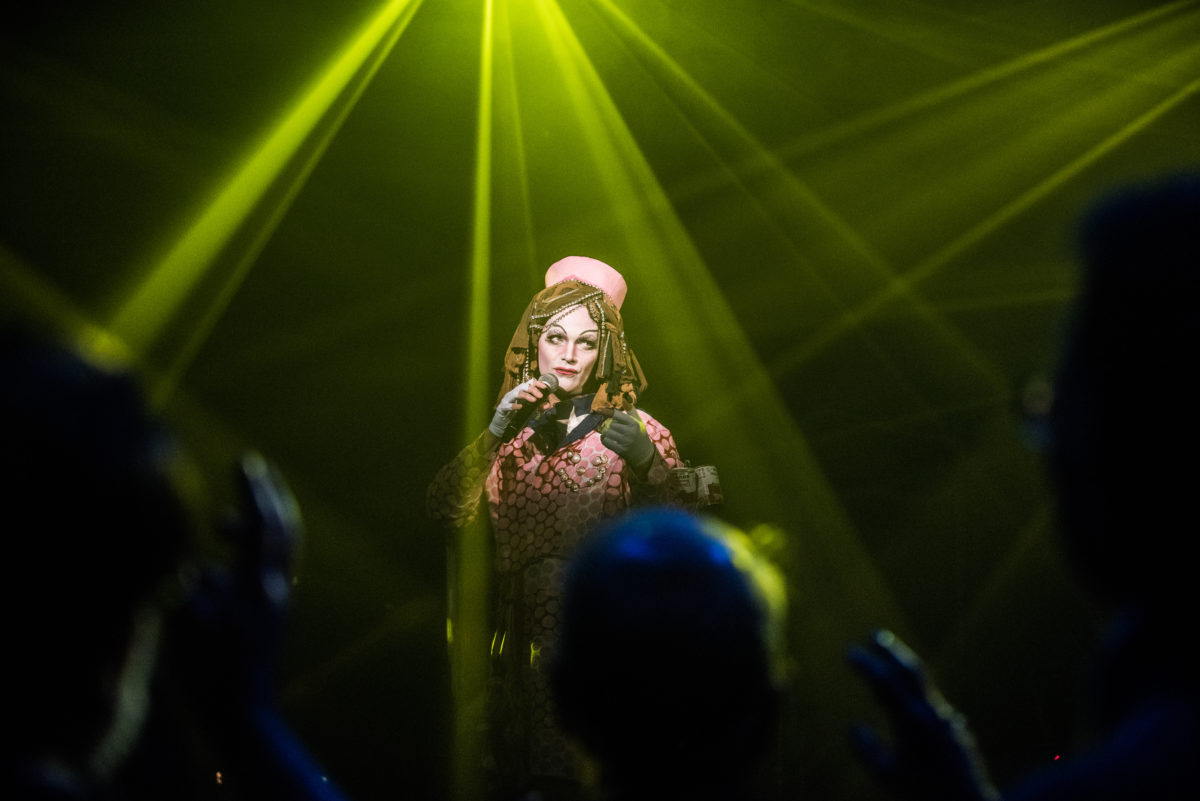
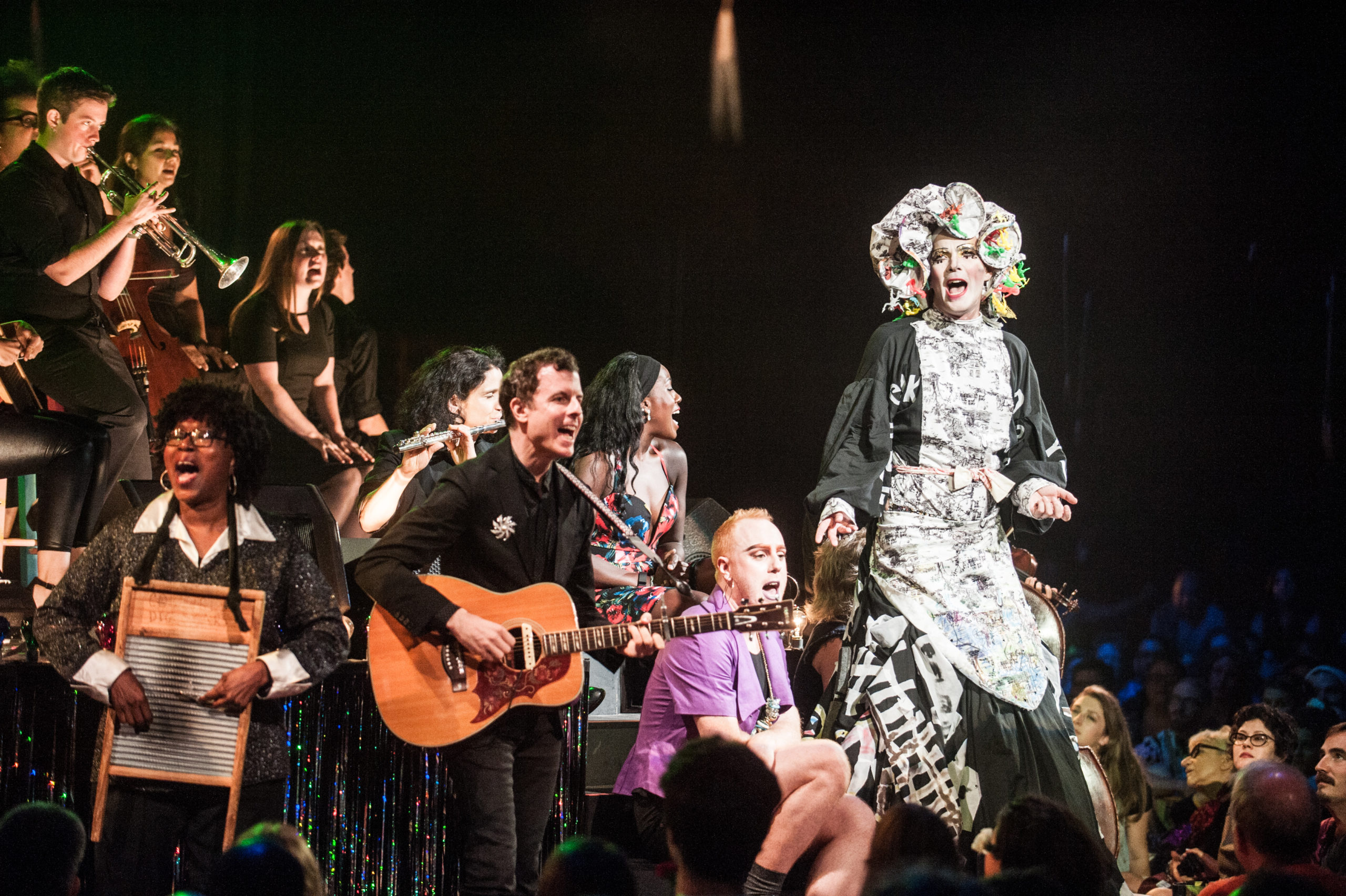
BARLO PERRY
“Adherence to legend at the expense of facts will ruin America—the work is well underway.” That’s David Thomson on John Ford, but it’s also something you’ve recognized in your 24-Decade project, in the way you explode some of our national mythologies.
TAYLOR MAC
One of the complicated things about communities—nations, friends, families, neighborhoods, organizations—is that they’re often built with things from the past that aren’t serving us in the present moment. We feel like if we let go of things from the past that helped build the community, it will all fall apart. So we’re afraid to move on, without learning how the community has changed or what it needs now. What are those changes, how are our communities being built, what are their narratives, and was something more interesting being built at the same time? This is what the show is about, and it grapples with this in all kinds of ways in every decade.
When we’re onstage dealing with the Civil War—“Songs Popular During Polarization”—we’re talking about our constant need to forgive the South, and to be easy on them because they lost [laughs]. And what that need created in our culture when we stopped making them accountable, because they’re our “brothers.” In America we have this history where we forgive the oppressor and vilify the outsider. In order to forgive the South, who did we have to vilify? Even a straight white man can be an outsider if he has a particular point of view outside supporting the status quo. So it’s not about identity politics as much as a specific kind of oppression.
Gloria Steinem has said that the distinctions we make—racial, gender, etc.—are all made up, and we could unmake them if we wanted to. But most of us can’t.
Well, as much criticism as the Millennials get, what’s so interesting about them is that they are a generation moving toward nobody gets left behind. And that means recognizing that some of these categories need to go away.
What was the impetus behind the 24-Decade project?
It was an AIDS walk. I had never seen an out homosexual before, and so many at the same time. I discovered queer history, queer agency, queer pride while the community was being torn apart because of the epidemic and institutionalized homophobia. To see that community building itself and surviving as it was weakening and disintegrating was an interesting dichotomy. And years later, I thought, I want to make a show that’s a metaphor, a representation of that. Because of the durational aspect of the show, we’re all falling apart. Even the 3-hour shows have their own durational feel. So we’re falling apart, but we’re all doing it together because of the various things I ask the audience to do. We’re building a bond. We’ve been working on the show for the last four years, and people come again and again because there’s a serial aspect to doing all the decades at different times. You’re seeing friendships strengthen, people getting married, having babies [laughs]. We’re making something tangible from a seminal art form, which has been fascinating, and not necessarily totally good [laughs].
I saw you at Royce Hall in March, 2016, and it was a fantastic show. When the Mariachi Reyna de Los Angeles joined you onstage for three songs, an electric charge went through the audience.
Those women are so extraordinary.
They sang “Volver, Volver” to you onstage.
I sang the chorus with them. We kind of threw that together at the last second. My dream is that we get to bring them to New York this fall [2016], and work with them in L.A. again after that. Now that we know each other, we can take a little more time to work out a more intricate collaboration.
You performed a 12-hour show at Vassar in July 2016, and a complete 24-hour show in Brooklyn in October 2016.
And we’ve done some 6-hour shows. We’re in marathon training. [Musical director/pianist] Matt Ray and I have been doing these long shows to find out what happens to our bodies when we’re onstage for every one of those hours. It’s also a chance to work on the material again. Every time we perform, our performances are rehearsals, and our rehearsals performances. So every time we do it, we understand the show more.
The producers of Einstein on the Beach [a 5-hour work] encouraged the audience to come and go as they pleased. Is that what will happen with your project, with the longer shows?
Well, you can go to the bathroom when you want, and if you need a little break or need to get some food, okay. Do it how you want to stay sane. But the idea is, if you’re coming to watch an hour, you’re coming to watch the whole thing. We don’t take an intermission. It shouldn’t be like a festival, where you stay a couple hours, call it a night, and go home. If you’re coming, you’re in it, because part of the art is what happens to the audience over a durational period. We don’t want people coming in at the 6-hour point who haven’t already been part of the show.
You’re asking audience members to sign an agreement obliging them to stay?
Oh, yeah. [Laughs]
You’ve written that “authentic failure on stage is one of the great art forms.” When I read that, the first person I thought of was Elaine Stritch.
[Laughs] She’s a great example of that, actually.
What’s an authentic failure?
Authentic failure involves risk. And it’s not a performance of failure. You’re not getting up there and saying, “I plan on forgetting my lyric at this point, the way I’ve rehearsed forgetting my lyric. And now I’m recovering, the way I rehearsed recovering.” That’s the kind of thing someone like Liza Minnelli would do [laughs]. In order to get the laugh, in order to ingratiate herself, she will perform failing. I’m not knocking that. It’s a wonderful technique that people use all the time. And using it doesn’t mean you’re inauthentic. But there’s something about getting up there, risking, falling flat on your ass, and then picking yourself up, that, when you’re watching it on a stage, is profound. There’s something about risking your humanity on a stage that is one of the major reasons why I go to the theater and live performances. And it’s one of the great things that performance art can actually give. I just love it, and I thought, I want to do a show where I put myself in a situation where many of those things can happen. The show has 246 songs. I’ve memorized them all, and performed them many times without messing up, but there’s never been a show where I didn’t mess up once or twice. It’s a situation where I know failure is probably coming, but I don’t know when or where.
But I only like authentic failure when it’s accompanied by authentic expertise, you know? That’s what’s exciting to me. I don’t want to watch a train wreck.
Can authentic failure apply to movies? Because I recently saw Zoe Saldana in Nina, and—
[Laughs] I’m not going to watch that.
It’s actually not that bad. It could be an authentic failure.
Well, there you go. It’s like Mommie Dearest—these camp classics where everyone tried but didn’t quite succeed, and came up with something better than success would have ever been.
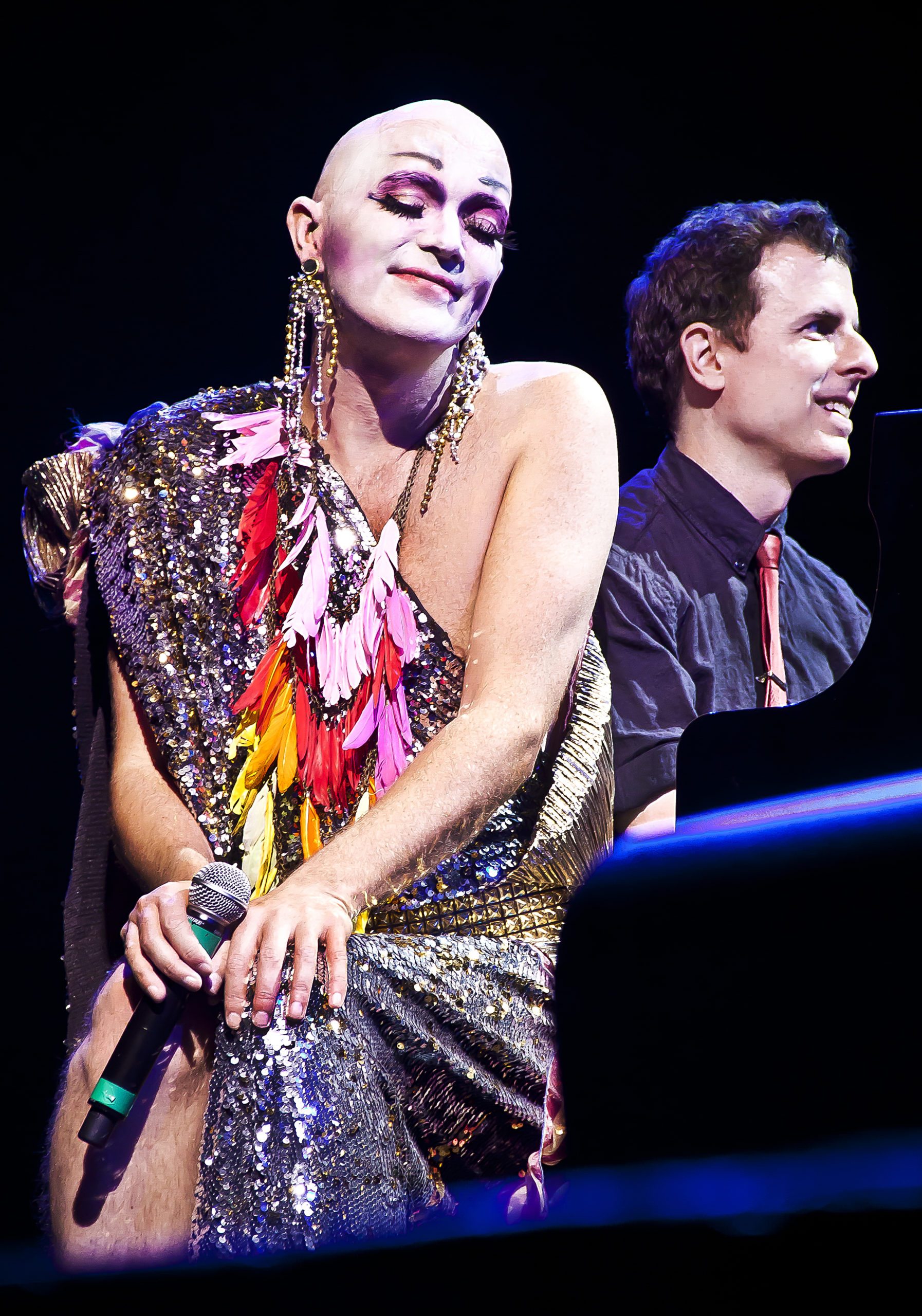
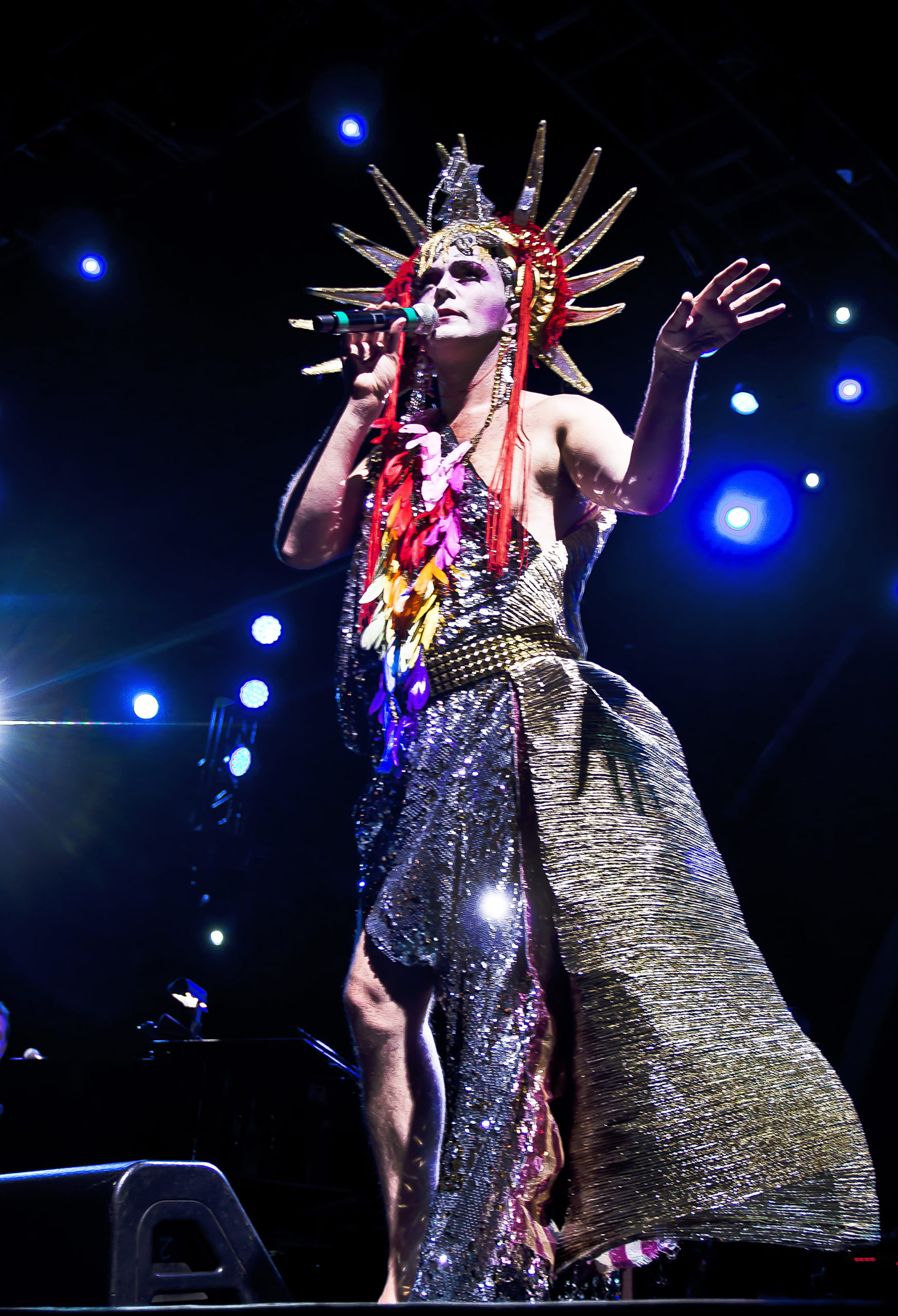
One of the funniest videos in the history of YouTube is you and Justin Vivian Bond singing [a deeply satirical version of] “Where Were You When They Crucified My Lord.”
[Laughs] We’ve done that a few times. We never rehearse it, we don’t even know who’s going to sing what. I didn’t even know the song. She just said, “Get up there and do it.” Justin Vivian Bond is a major inspiration to me. In some ways, she’s my performance art sister. We’ve shared a lot of bills, performed a number of times together. I’m a total fan, and I’ve learned so much from Justin and Kenny Mellman [Kiki and Herb], independently from one another, and now together again.
At Royce Hall you sang “The Surrey With the Fringe on Top,” and the distance between the song’s sweetness and how you presented it was a little jarring. You introduced the number by observing that, given all that had happened in Europe during World War II, shouldn’t we be over blonds by now? Then you went into the audience and found two blond young men to join you onstage, and gave them swastika armbands to wear. You recruited two more audience members to play horses pulling an imaginary surrey, and then performed the song.
Working catharsis is my art form, and one of the ways I do that is by the time-honored tradition of making something ridiculous. It’s so absurd that after World War II, and that atrocity, that we would still ask everyone to be fair. And that every magazine would have blondes on the cover. We’re ignoring this history. My job as a theater artist is to remind people of things they’re forgetting about, or they’ve dismissed or buried, or other people have buried for them. I’m not saying we should ban all blonds and blame them eternally for everything that happened. But maybe we shouldn’t be creating a culture where everyone is pressured to look blond.
Is this similar to our queer attraction to, say, Tom of Finland imagery?
Well, yeah. [Laughs] But that’s kink. Kink is different, don’t you think? We can have a kink fantasy, and know that it’s wrong. But that’s not how the culture is working right now. The culture says, “Blonds are good.” The biggest African-American pop star on the planet dyed her hair blonde. It’s like, what!? [Laughs] It’s a little absurd.
You work with parody and irony and satire. But I’m guessing that you also have a lot of pure affection for the material.
Yes. There’s only maybe three or four songs out of the 246 that I just despise. There’s a handful that I don’t really like, but I do them because they’re interesting contextually for what we’re doing. The goal isn’t to do a hit parade and get everyone to think every song is so great. But you can’t sing a song and not kind of exist in the space where the songwriter was working from, and find some way of loving the attempt.
The decade from 1956 to 1966 is called “Songs Popular in the Bayard Rustin Planning Room.”
We’ve changed that a little. Now it’s “Songs Popular During the March on Washington.” Bayard Rustin is definitely still in there. He’s one of my personal heroes. He created freedom rides decades before Rosa Parks. Blacks and whites, anyone who wanted to join, in the front of the bus. Not to take anything away from Parks, but these things don’t just happen. It had been planned and worked on for years, and tried and tried and tried again. Until something breaks. Until the strategy gets to the point where you know how to do it. In some ways, this mirrors the form of the 24-Decade show. By doing and doing and getting back on the bus.
Rustin was kept in the closet by a lot of people in the movement, wasn’t he?
They were worried that the FBI and George Wallace were going to use that against them. So they kept that on the down low. Rustin was such a major force in the movement, and such a dynamic organizer that, of course, they wanted to use his services. There’s a concept people have about trickle-down humanitarianism, or trickle-down civil rights, where if you have exemplary people at the top, it will trickle down to people less fortunate. [Laughs] It happened that way with the abolitionist movement, but that’s not the way successful activist movements usually work.
You ended your show at Royce with Nina Simone’s “Mississippi Goddam.” Today we have a different kind of “Mississippi Goddam,” “Alabama Goddam,” “North Carolina Goddam.” The South is trying to block same-sex and transgender equality at the state level.
A lot of it is redistricting. And propaganda and grassroots stuff. I’ve performed down there, and I’d perform down there again. I think it’s great that Bruce Springsteen boycotts North Carolina, because that specifically affects his audience. But I’m a performer who should go down there, because the state needs to become more queer, and interact with queers on a regular basis. They need support. I don’t believe in a total economic boycott.
This is something that affects everything I do. Today we’re into generalization and taking sides, and we’re very polarized. Generalizing is part of what causes depression. The more we generalize, the more separate we become. The more we get specific with each other, and actually hang out, and actually try to solve the problems, the better life is. The 24-Decade show is about getting back to specifics.
This conversation was originally published in PARIS LA 15, the Music Issue (2017).
Text © PARIS LA.
Taylor Mac, from top: In 2016 at St. Ann’s Warehouse in Brooklyn, photographs by Teddy Wolff (4); Taylor with Matt Ray, and in “liberty” headdress, photographs by Ves Pitts (2); at St. Ann’s Warehouse, photograph by Teddy Wolff. Taylor Mac’s costumes are by Machine Dazzle (Matthew Flower). Images courtesy and © Taylor Mac and the photographers.
